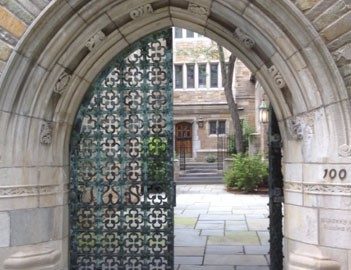Transfer Students Add Value to Top-Tier Colleges
Today, more than one-third of college students transfer at least once in the process of earning a bachelor’s degree. The reasons why top-tier institutions haven’t accepted more of these transfer students aren’t clear. Is it hauteur, a fixation on high school seniors, or simply the inability to perceive a missed opportunity? Fortunately, it appears that a reversal of this long-standing bias is afoot.
Administrators of highly selective colleges have resisted the notion that they should accept more transfer students. They point out that they’re already inundated with applications from high school seniors, most with excellent credentials. Although they enroll only 7% of the nation’s undergraduates, the most selective institutions in the U.S. receive about one-third of college applications.
There have been a few indications that the unhappy status quo for transfer students is changing. Earlier this year, the University of California system reported that it accepted more transfer students than ever before. Even more significantly, Princeton University announced that there were 13 transfer students among the 1,300 accepted for the 2018 fall semester. This marked the first time since 1990 that Princeton has accepted transfer students. And Princeton is not just any highly selective school. It’s the institution listed as number one among National Universities in the college rankings of U.S. News & World Report and other influential college ranking services.
There are several reasons behind the rising trend toward acceptance of more transfer students by top-tier schools, as described below:
- Transfer students help sustain an institution’s revenue by replacing students who leave after the first or second year.
- After years of growth, the number of international students enrolling in American colleges is declining, due largely to the nation’s more restrictive policies on immigration. Other English-speaking countries such as Canada and Australia have become comparatively more attractive to foreign students.
- Although less significant to highly selective institutions, the growing acceptance of transfer students by 4-year colleges is motivated by demographic shifts that have caused a diminution in the population of high school seniors. This change has been evident for the last six years and is expected to continue.
- Transfer students can help colleges balance the racial, ethnic, and socioeconomic diversity they seek in their student populations.
- Transfers also help raise one of a college’s most important administrative metrics — yield. Yield is the percentage of students who are accepted who actually enroll in the school. According to a 2017 survey conducted by the National Association for College Admission Counseling (NACAC), 66% of transfer applicants who were admitted to a college or university enrolled, compared with only 28% of high school seniors.
In a recent article in the New York Times, Alina Tugend noted that, “Another reason for welcoming transfer students is that many colleges now realize that a high portion of the students they turn away are just as good as the ones they accept. Transfer students are seen as much stronger than in the past.”
Elite schools may need even more incentives to accelerate their rate of accepting transfer students. One such incentive is a solution to the problem that transfer students have been statistical non-persons because they haven’t been included in the federal graduation rates and other data fields that are generated by the Integrated Postsecondary Education Data System. This data is included in the algorithms of the college rankings of publications such U.S. News & World Report, Forbes, and the New York Times. Policymakers and researchers also use this data to assess a college’s performance. Last year, the U.S. Department of Education expanded the information gathered in this process, henceforth to include transfer students, so a school won’t neglect transfers due to their lack of impact on their statistical profile.
Also helpful to transfer students is the fact that this year, NACAC addressed a problem that transfer students often face; being asked to make a deposit to guarantee their spot at a school before knowing how many of their credits will transfer or what financial aid they may be eligible to receive. NACAC has modified its code of ethics to specify that colleges must provide transfer students with a good-faith estimate of how their earned credits will be applied to their degree, as well as a financial aid notification, before requiring that a transfer student make a deposit.
According to Jeffrey Selingo of the Washington Post, help for transfer students will also come from another source. He says, “Consider the 290 institutions eligible for the American Talent Initiative, an alliance of colleges that includes all of the Ivy League schools. All of the Initiative schools graduate more than 70 percent of their students in six years. Across these institutions, only 18 percent of new students are transfers, compared with 32 percent at all 4-year institutions. The alliance has committed to enrolling and graduating 50,000 more transfer students by 2025. If all the schools eligible for the alliance enrolled just 40 transfer students a year, the group estimates, it would be nearly halfway toward its goal.”
Gaining admission to your elite dream school as a transfer student is even more difficult than it is as a high school senior. Convincing the admissions office of a top-tier school to admit you as a transfer student requires savvy and substantial effort.
IvySelect will work with you to formulate a custom-tailored approach that is unique to your situation. We advise you to seek to transfer not just to your dream school but to apply to a full range of schools that fit you better than your current one. Through our strategic guidance and expert assistance, you can be sure that working with IvySelect will raise your competitive stature and optimize your attractiveness to top-tier colleges and universities as a transfer student.





